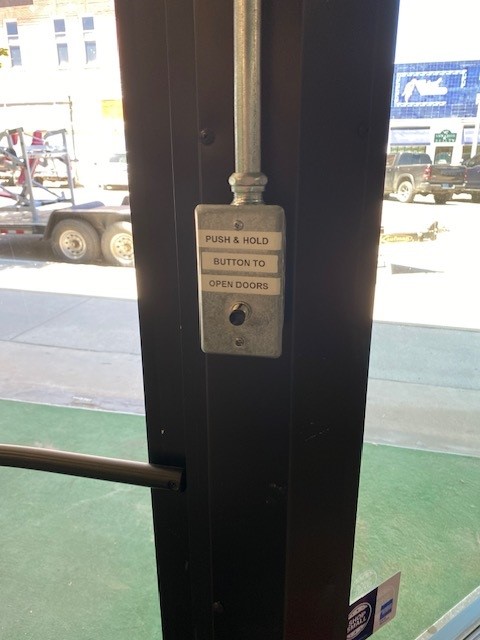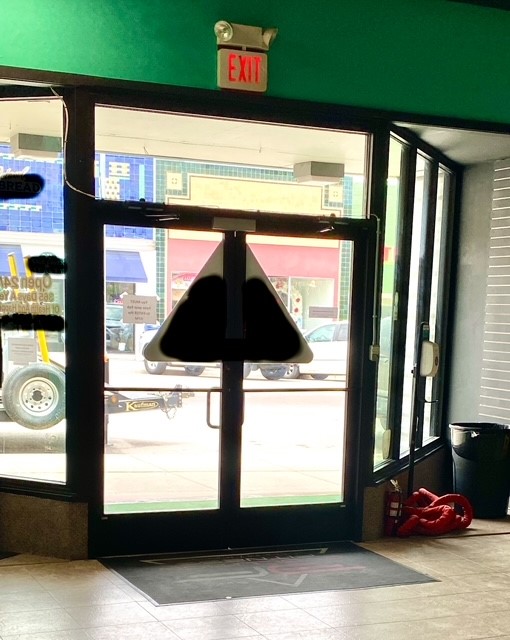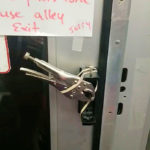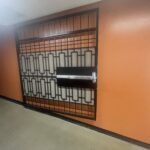Given the technology that can now be used for access, supervision, and security, I think we will be seeing more businesses that do not have staff onsite at all times. Imagine a gym or studio space where clients can use electronic credentials for access and work out on their own – these businesses already exist.
Today’s Wordless Wednesday photos show the main entrance of exactly this type of facility – a gym that is open 24 hours/day, where there is no staff present. Members enter using their electronic fob – the question is…how do they exit after their workout?
For the readers who have asked for more explanation on my Wordless Wednesday posts – this is for you. What’s wrong here?
These main entry doors have an electromagnetic lock. There are two ways the model codes would address this opening:
Option A – Sensor Release: The mag-lock is released by a sensor above the door that detects a building occupant approaching on the egress side, and unlocks the door for egress. The lock must also release upon power failure, activation of the fire alarm system (if present), and by an auxiliary switch beside the door. The door in today’s photos has no sensor to release the mag-lock, so someone attempting to exit must know that they have to push the button (this is not code-compliant). And although this door has an auxiliary switch next to it, the fact that you have to push and hold the button for a few seconds leads me to believe that this switch is not the type required by the model codes – the switch must unlock the doors for 30 seconds – independent of the access control system electronics.
Option B – Door Hardware Release: The mag-lock is released by a switch in the hardware mounted on the door. This would typically be panic hardware, a sensor bar, or a lever handle with an integral switch. Operating the hardware would activate the switch and unlock the mag-lock – the doors pictured here do not have this hardware. With this option, the lock must also unlock upon power failure – it is not required to unlock via an auxiliary switch or fire alarm activation.
If you’d like to learn more about these two options, check out this whiteboard animation video: Code Requirements for Electromagnetic Locks.
You need to login or register to bookmark/favorite this content.











Leave A Comment